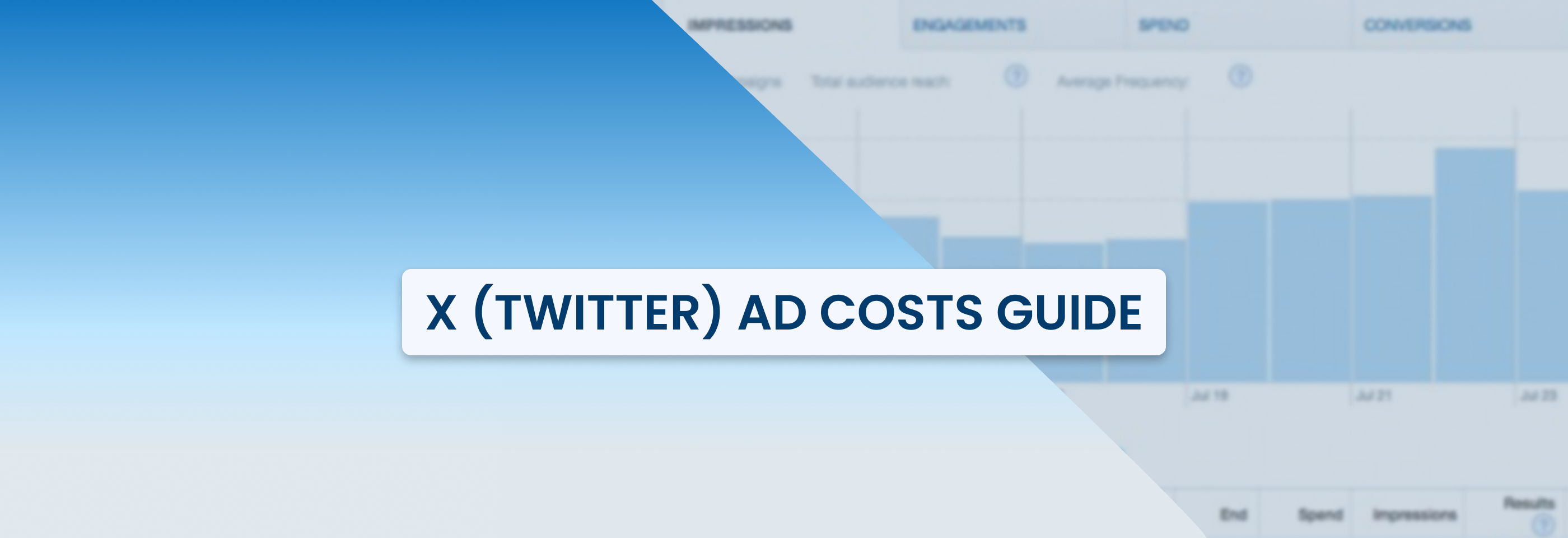How to Boost Brand Awareness with Facebook Ads
2024-07-04
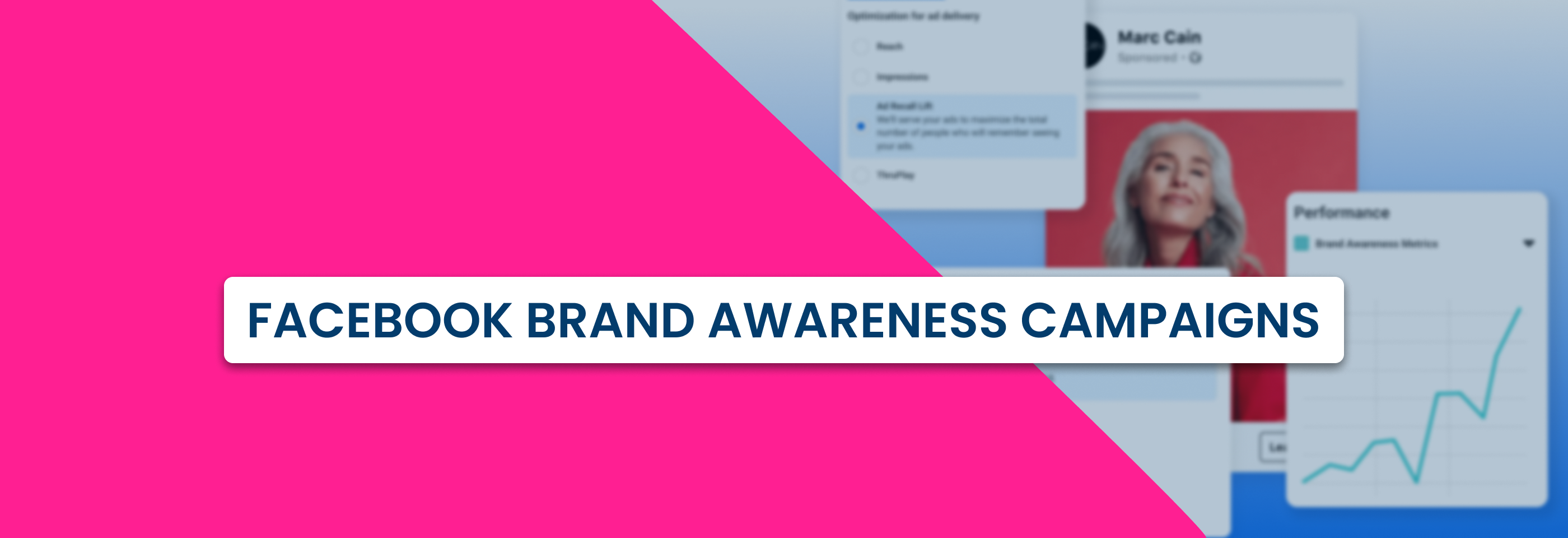
Top-of-the-funnel brand awareness campaigns are key for a balanced marketing strategy because they make your business stand out from everyone else. But as they don’t usually bring immediate results that can be measured in tangible things (like leads or sales), many advertisers underestimate their importance.
Basically, these campaigns might seem tricky and unnecessary because their results aren't instant, but they're essential for long-term success. They help brands build a strong foundation for future sales and customer loyalty, planting seeds for a future harvest.
So, how do you get people to notice you? That's where Facebook ads come in as one of the best options for raising brand awareness for practically any type of business.
With the right strategy, you can make a big impact and get your brand in front of the right people. So, let's dive into how you can boost brand awareness with Facebook ads and make your brand unforgettable.
Brand Awareness 101: the basics
Before we get to the details, we need to cover the basics and explain what brand awareness is and why you need to care about it.
Brand awareness in advertising means getting people to recognize and remember your brand. It’s about making your brand stand out so that when people see your logo, hear your name, or see your product, they instantly know who you are.
As you probably know, brand awareness was one of the main campaign objectives on Facebook, and it continues to be even after the recent ODAX update.
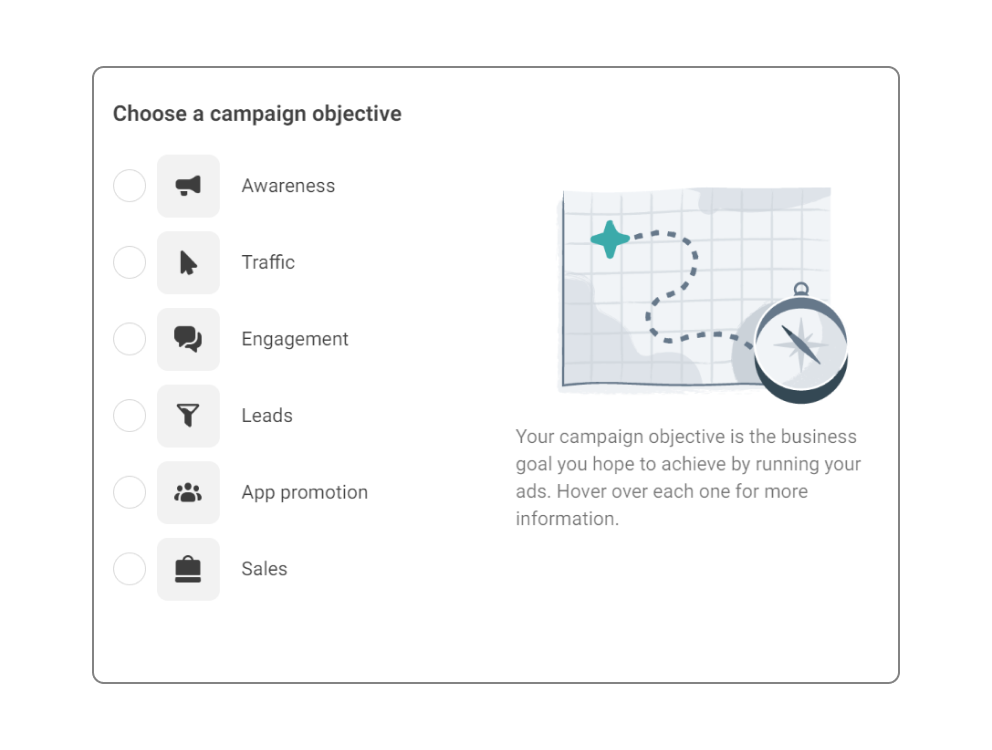
This is because it’s one of the key stages that every customer goes through when they move through your sales funnel: they go from not knowing about your brand to recognizing it, then considering your products and services, and finally to choosing your brand over competitors and making a decision to convert.
One of the ways to build brand awareness online is by running ads on social media platforms, since they provide access to diverse audiences and let you catch their attention while they’re scrolling. The goal of these ad campaigns is to create a strong impression so people think of your brand first when they need something you offer.
In simple terms, brand awareness is about making your business visible and memorable so that potential customers think of you when they need something.
Key benefits of working on brand awareness
1. Increased trust and loyalty
When people recognize your brand, they trust your products more and thus feel safe when purchasing from you. Positive reviews and good feedback reinforce this trust, bringing more potential customers into your conversion funnel.
If they are satisfied, they are likely to come back and recommend your brand to others. This word-of-mouth promotion helps you attract new customers who might not have heard of you before.
Also, brands that are recognized and trusted by people can easily introduce new products or enter new markets without too much difficulty.
2. Competitive advantage
When people know your brand well, it sets you apart from your competitors. Customers tend to pick brands they recognize over ones they don't know much about: it feels safer and more reliable.
Plus, when your brand is trusted, you spend less time convincing people to give your products or services a shot. Instead, you can focus on introducing something new because your customers already believe in what you offer.
3. Higher conversion rates
When more people know about your brand, it usually means more sales. A strong brand brings in more customers who not only buy from you once but keep coming back. When your brand is the first thing people think of when they’re looking for something, they're more likely to choose you.
Ultimately, even if brand awareness is not as tangible as the results of other types of ad campaigns, you can turn it into conversions (e.g., sales, subscriptions, or installs) with enough time and patience.
4. Better ad campaigns
When more people recognize your brand, advertising becomes easy since it's simpler and cheaper to promote a brand that people already know.
Known brands grab more attention and interest from customers because you don't have to explain who you are all the time. As a result, your ads and content are more likely to catch their eye and bring in more sales, and you can focus on telling your story and connecting with your audience.
Basically, working on increasing brand awareness leads to a stronger and more successful business. If you’re not treating brand awareness campaigns as one of your priorities, it’s time to start doing so.
Now, let’s talk about how to use Facebook ads to make your brand more recognizable and memorable.
Using Facebook ads for brand awareness
As we’ve said before, social media is one of the best places to raise brand awareness, thanks to the large number of people you can reach. Besides, you can always combine paid and organic strategies to promote your business, leveraging the strengths of both advertising and content marketing for better results.
Facebook, with its more than 3 billion active users worldwide, is definitely the first advertising platform you should consider for doing so. There are also other benefits that Facebook has besides the large user count.
The best part about Facebook ads is that you can pick exactly who will see them by using advanced filters like demographics, interests, behaviors, and so on. You can read about Facebook ad targeting to better understand your options.
You can also make your brand more memorable through different ad formats like videos, images, carousels, stories, etc. Some of these ad formats are more eye-catching and interactive than the others, but all of them can work well to grab people's attention and help them remember your brand.
Another great thing about Facebook ads is that they don't have to cost a fortune (you can check the data on Facebook ad costs to know what to expect). You can start with a smaller amount of money and then spend more if you see your ads performing well. This makes it easy for any business, big or small, to try out Facebook ads without breaking the bank.
Next, let’s go through the main strategies you can use to run effective brand awareness campaigns on Facebook.
1. Start with audience research
To run effective brand awareness campaigns on Facebook, you need to know who your audience is, so the best thing to do is to start with proper research.
If you already have a Facebook page for your business, you can check the audience insights for it to break down your audience based on gender, age, and location. This data is not as granular as it could be, but it still helps you understand who your current and potential audiences are.
If you have a website, you’re probably using Google Analytics to track user behavior there. This tool can help you get demographic data on your website traffic, which can often be more useful than the data about people who like your Facebook page since visiting your website usually signifies a higher degree of interest in what you’re offering.
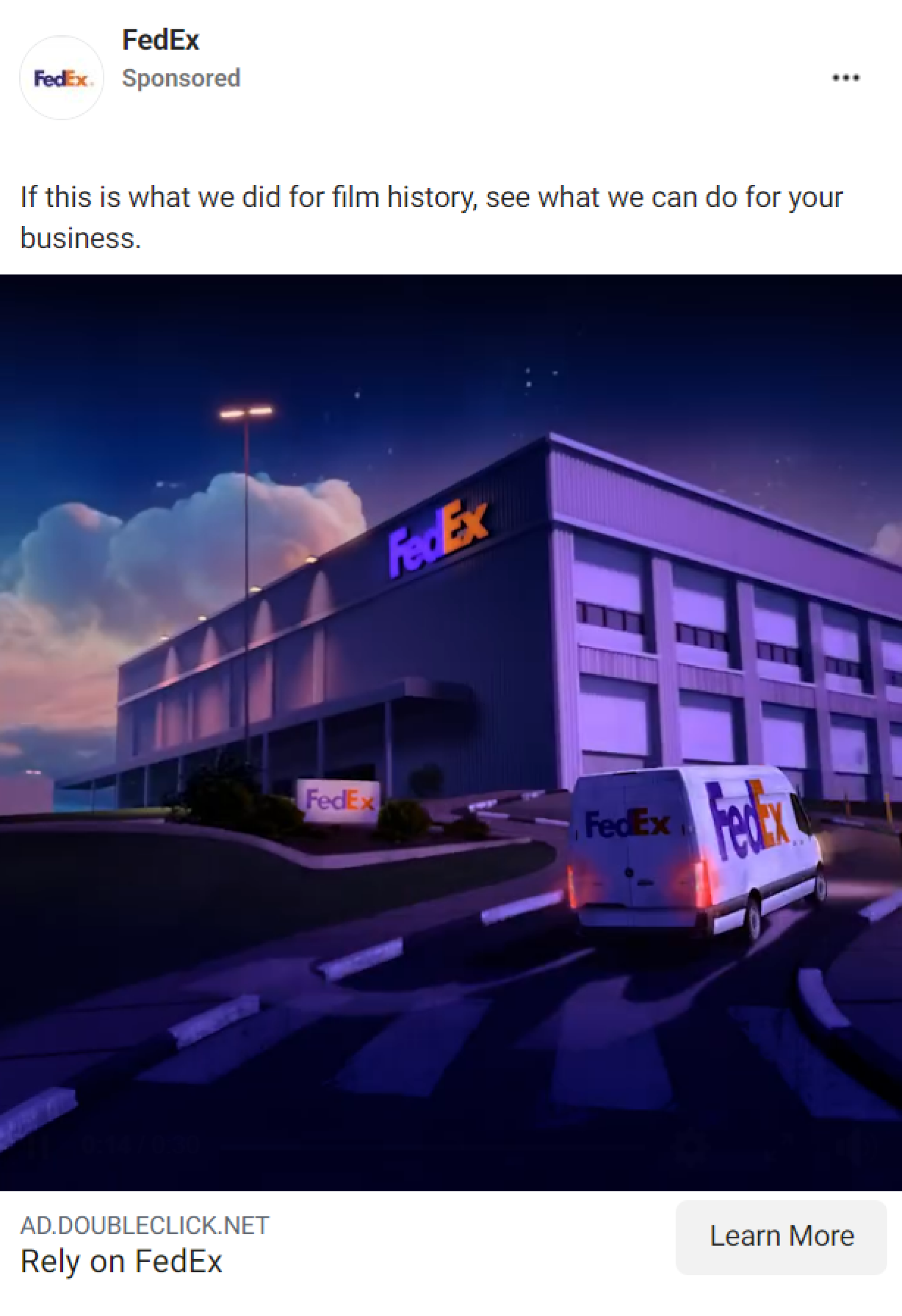 FedEx appeals to one of their core audience segments in their ads, business owners, offering them a solution to their problems.
FedEx appeals to one of their core audience segments in their ads, business owners, offering them a solution to their problems.
Besides the demographics, you also need to know what motivates your customers, what their goals are, and what's stopping them from reaching those goals – all of this can be addressed in your ad campaigns later.
A good way to get this information is to talk to your customers directly by conducting surveys and asking them relevant questions. Once you understand what your customers are looking for (both in terms of products/services and the type of communication with brands), you’ll be able to create ads aimed at different audience segments based on their preferences and needs.
2. Try different targeting options
Facebook's targeting tools are great for finding the right audience for your brand awareness campaigns.
You can start by targeting specific groups that match your customer profiles closely by using these detailed options:
- Interests to find people based on hobbies or activities they like (this is a more broad category than others);
- Behaviors to target users' habits (especially when it comes to how they shop online);
- Education level to choose audiences based on their education if it aligns with your customer personas.
Facebook’s interest-based targeting can help you find people who like specific brands, bloggers, and media outlets, especially the ones similar to or related to what your brand offers. This is a great way to raise brand awareness among people who are likely to have something in common with your existing customers.
The next targeting option you can try is custom audiences, which help you retarget people who already know your brand. You can upload a list of contacts or use data from your website or app to create these audiences to remind people about your brand and increase their interest.
The key thing to remember here is that it takes several times of seeing the ad for people to remember what it’s about or who the advertiser (i.e. your brand) is, but showing your ad too often can lead to ad fatigue. Finding the balance between the two and using multiple ad creatives are two main strategies to avoid this.
Let’s also not forget about the lookalikes: they’re essential for brand awareness campaigns. Once you have a solid target audience, you can create lookalikes based on it to find new people who are similar to your best customers. Facebook will find users who share characteristics with your existing audience, making it easier to reach new potential customers.
Finally, don’t stick to just one type of targeting: combine different options to refine your audience and find new segments. For example, you can start with broad demographic targeting and then narrow it down using interests and behaviors if you see that certain groups of people are more likely to engage with your ads.
3. Create engaging ads
If you want to boost your brand's visibility on Facebook, your ads have to be really good. The competition on the platform is high, so connecting with people either through emotions or something more pragmatic is essential if you want to stand out.
But how to do it?
First of all, instead of just talking about your products or services, you can try sharing stories or experiences that resonate with your audience – this helps them remember your brand better.
Evoking emotions works a lot better than simply listing the benefits of what you’re providing. So, consider turning the key points of your ad’s message into an engaging story to better connect with your audience.
If emotional appeal is not your brand’s strongest suit, you can shift the focus of your ads to how your business can solve specific problems your audience faces. Show how your product or service can help them, but again, do so through storytelling.
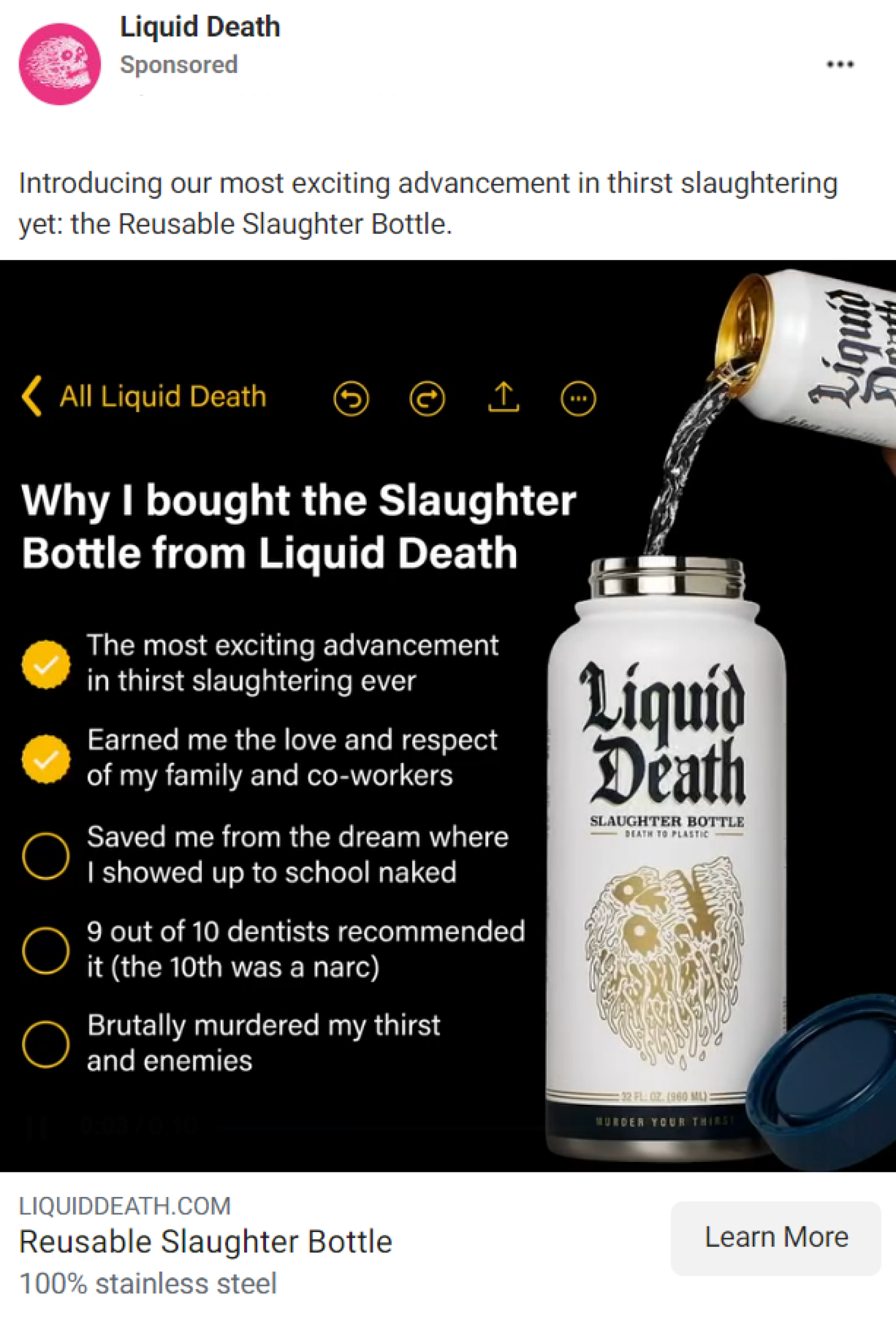
Liquid Death uses the good-old "listing the benefits" approach, but does so in a humorous way.
Even if you have a B2B business, your advertising strategy can be anything but boring if you learn how to use different types of narratives in your ads. For example, you can follow this simple formula that is used by many brands, both big and small: someone has a certain problem and struggles to solve it => your business can help them with this => the problem is solved. This is a pretty universal narrative form that allows you to communicate your advertising message effectively.
Running Facebook video ads is also a good strategy because they grab attention and can tell your brand's story more effectively than simple images. Besides, there’s a lot more that you can deliver through video content, so there are more opportunities to get creative and original with this ad format.
But remember to keep your ads simple and clear. It’s essential for brand awareness: people have to easily remember and recognize your brand, so don’t overcomplicate things.
4. Try different ad formats and placements
As we’ve said before, people need to see your ads multiple times before they start to recognize your brand. But you can’t just bombard them with the same ad over and over again, shown in the same spot all the time: you have to diversify for the maximum impact.
So, it’s best to use multiple ad formats to show your brand from different sides and to different audiences, and do it across various placements to reach as many people as possible.
Start by experimenting with different ad formats, like these ones:
- Image ads: these can be like your best snapshots — they catch people's eyes as they scroll. Use them to showcase your products or brand in a single, striking image;
- Video ads: vdeos are your chance to tell a story and connect deeply with viewers. Show off your products in action or share resonating stories to connect with your audience;
- Carousel ads: these are like your mini catalog, where you can feature multiple images or videos in one ad. This is perfect for highlighting different products or features;
- Instant Experience ads: these ads are all about giving users an immersive, full-screen experience. You can use them to show off your brand with interactive features like product catalogs;
- Collections ads: if you’re trying to promote a new product line, these ads can help you let people explore your offerings directly within the ad;
- Stories ads: these full-screen ads pop up between user stories on Facebook and Instagram. They're quick, engaging, and perfect for grabbing attention, especially if it’s a younger audience;
- Messenger ads: you can also meet your audience right where they chat. These ads show up in Messenger inboxes, allowing for direct interaction through messaging;
- In-Stream videos: these ads play within video content on Facebook Watch or Audience Network. They're a great way to reach viewers already engaged with similar content;
- Playables: these ads are interactive and fun, playable ads are like mini-games or experiences. Use them to engage users directly and showcase your product features creatively.
In general, video ads, especially the ones in Reels and Stories, are way more engaging and thus more effective than other formats (as clearly shown by case studies). So, it makes sense to use more videos in your awareness campaigns if you have the means to create them.
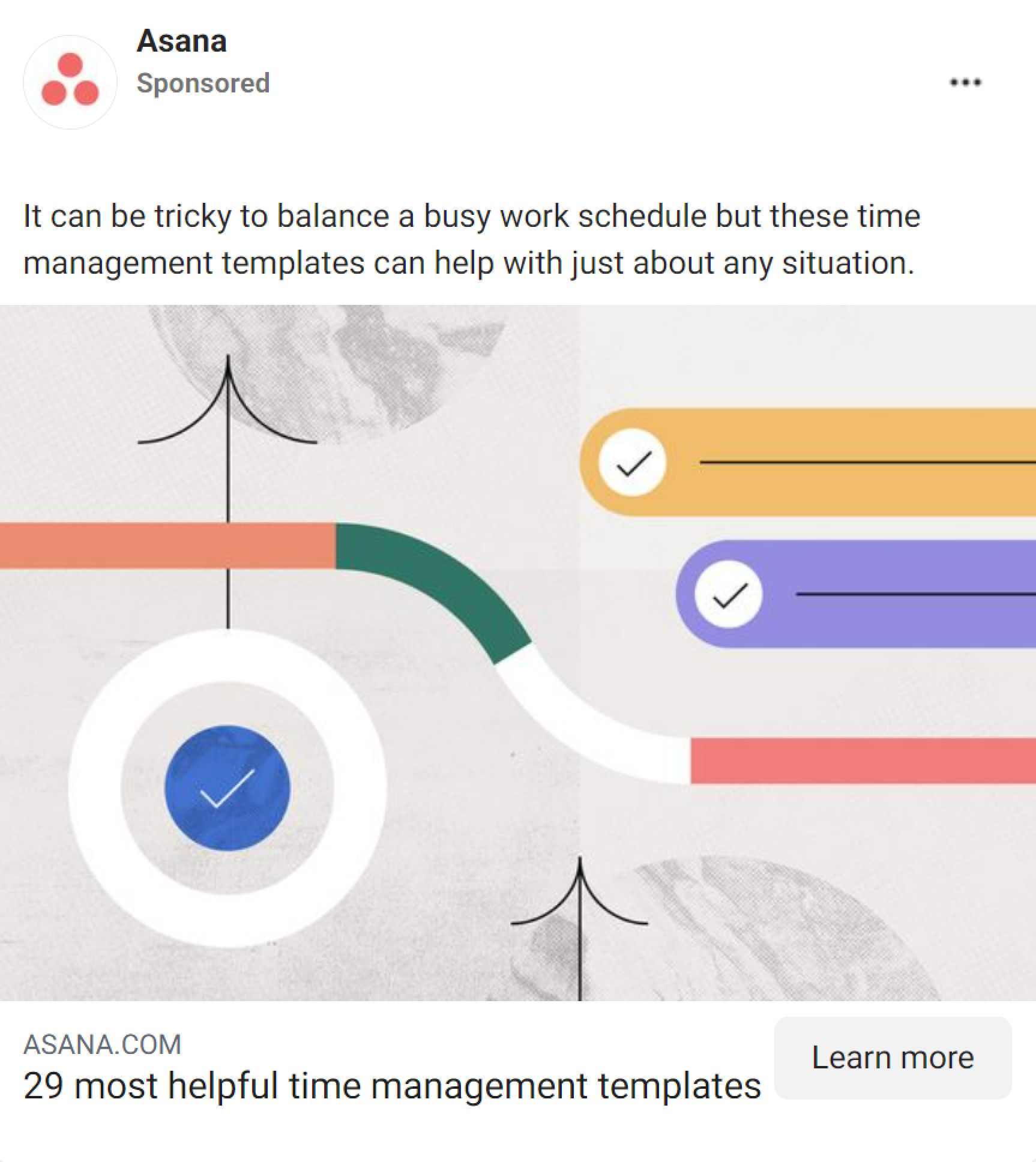 Asana's ad shows that single-image ads can look interesting and unique as well.
Asana's ad shows that single-image ads can look interesting and unique as well.
Next, don't just stick to one placement: test different places across Facebook, Messenger, Instagram, and the Meta Audience Network. This way, you can reach people wherever they are the most active. By trying and testing the different options available on Facebook, you can find what works best to get your brand out there.
5. Choose the right goals
When you're setting up Facebook ads to boost brand awareness, picking the right performance goal is crucial for the success of your campaigns.
First of all, it tells Facebook how to optimize your ad campaign. For example, if you choose "Maximize ad recall lift," Facebook will focus on showing your ads to people who are likely to remember them. This can help more people recognize your brand.
Secondly, the right goal helps align your ad spending with what you want to achieve. If you want to introduce your brand to as many people as possible, you can choose "Reach". If you're using video ads, choosing "ThruPlay" helps you increase the likelihood of your videos being watched till the end, which can make your message stick better.
Also, choosing the right goal helps you measure how well your brand awareness ads are working, which brings us to our last tip.
6. Measure the performance of your awareness campaigns
To see how well your brand awareness campaigns are doing, you need to keep an eye on a few key things.
First, check how many people are seeing your ads (reach) and how often they're shown (impressions). Impressions tell you how many times your ad is shown, with one person potentially seeing it multiple times. Growth in impressions can indicate increasing brand awareness on Facebook. Basically, it gives you an idea of how visible your brand is.
Tracking CPM (or the Cost per 1,000 people reached) can tell you how much you’re spending to show your ads to 1,000 users, helping you manage and optimize your budget effectively.
Next, look at social media engagement. Track likes, comments, shares, and mentions to see if people are interested in your brand. Engagement measures how users interact with your content, like watching a video for 10 seconds or liking and commenting on your posts. Changes in engagement can indicate how well your brand and, by extension, your ads are resonating with people.
Also, monitor your traffic. If more people are visiting your site because of your ads, that's a good sign your campaigns are working. Direct traffic, where people type your website address directly, shows that your brand is becoming more recognizable and memorable.
You can also use Facebook's tools to measure specific metrics like the Estimated Ad Recall Lift. This metric predicts how many people are likely to remember your ad after two days. It’s particularly useful for brand lift campaigns to measure the lasting impact of your ads.
Regularly compare these metrics to your campaign goals to see how you're doing and where you can improve.
Recap
Boosting your brand awareness is key to growing your business. Facebook ads are a great way to reach new people and make your brand stick in their minds.
By understanding what brand awareness is, tracking the right metrics, and following some simple tips, you can create campaigns that really make a difference for your brand.
If you’re ready to get started with your Facebook brand awareness campaign, jump in, try different things, and watch your brand become more recognizable.

